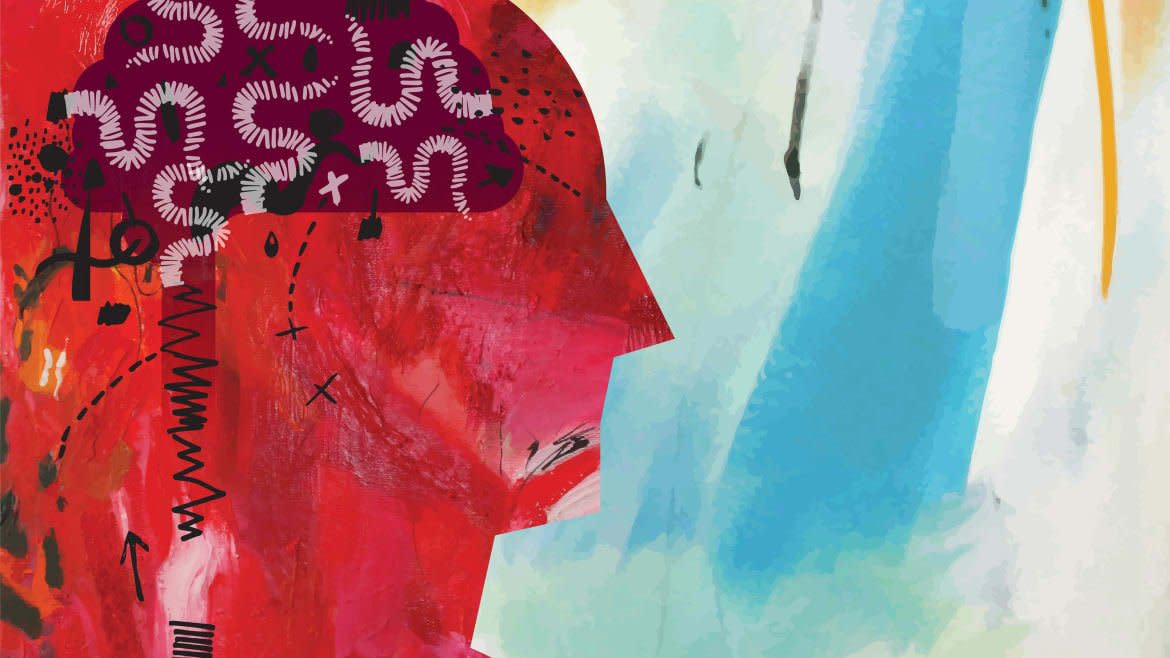A Personalized Brain Pacemaker Relieved Her Crippling Depression

For the majority of her life, Sarah—a 36-year-old woman who identified herself to reporters by first name only—felt “tortured” by severe, unrelenting depression.
“My daily life had become so restricted,” she recalled at a press briefing last week, describing suicidal impulses that overtook her several times each hour. “I barely moved, I barely did anything.” Diagnosed with major depressive disorder (MDD) in childhood, Sarah’s symptoms were relentless, despite multiple antidepressants and even electroconvulsive therapy.
Desperate, Sarah enrolled in a clinical trial at the University of California San Francisco, opting to undergo an experimental neuromodulation therapy called deep brain stimulation, or DBS. After two surgeries and weeks of data collection, she is no longer paralyzed by suicidal thoughts, and for the first time in her life she’s experiencing a positive outlook on life. Daily decisions like what to eat no longer overwhelm her , and she can also utilize coping skills she’s learned in therapy more effectively than before.
Sarah and her treatment team at the UCSF credit DBS with effectively saving her life. It’s the first time ever that a personalized therapy has been successfully used to alleviate treatment-resistant depression, a condition that afflicts nearly one out of every three depressed individuals seeking medical treatment. If the results of the study bear out for others, there’s a pathway for using DBS to potentially transform the lives of millions of others who continue to suffer from depression with no end in sight.
Similar to how a pacemaker delivers electrical impulses to the heart in order to correct an irregular heart rhythm, neuroscientists have long used DBS to deliver electrical stimulation to targeted areas of the brain, in order to correct other aberrant impulses that can lead to neurological problems like seizures or tremors. DBS was first approved in 1997 to treat tremors caused by Parkinson’s disease, and was later approved in 2018 to treat epileptic seizures. It has also been used to treat chronic pain and even some psychiatric disorders such as obsessive-compulsive disorder—but it has never been used to treat severe depression until now.
“In our work with epileptic patients, we observed that you can stimulate parts of the brain and it will relieve emotional symptoms such as anxiety and depression,” said Dr. Katherine Scagnos, one of the lead researchers in the study that was published in the journal Nature Medicine on Monday. “There is a substantial minority of patients with depression who remain resistant to therapy, and it was these patients that really drove us to this research.”
For this trial, the UCSF team borrowed heavily from the surgical approach they’ve used with epileptic patients, first using a “minimally invasive” procedure to drill small holes in Sarah’s skull where they placed electrodes in targeted areas of her brain. From there, they observed the brain’s electrical patterns to identify biological activity that correlated with Sarah’s depression symptoms. They found one: a neural circuit between the amygdala and the ventral striatal that fired when her depression symptoms were particularly intense.
Sarah’s doctors delivered small pulses of electrical stimulation when symptoms were prominent.When the team stimulated the ventral striatal region of Sarah’s brain, she felt a “rush” of joy.
“It made me realize that my depression was not a moral failing,” she said. “It could actually be treated.”
The team then implanted a permanent device in Sarah’s skull, roughly the size of a matchbox, called a neuropace RNS system. It was programmed to deliver brief electrical pulses to the ventral striatum whenever it sensed brain activity specific to her depression. Sarah can’t feel the stimulation itself, but she is able to feel her mood improve anywhere from 15 to 30 minutes after the pulses are delivered.
There was no guarantee Sarah would see any improvement, given the past failures of DBS to treat depression. The UCSF team seems to have found success by personalizing the treatment specifically to how her brain works, and by using intermittent electrical signals. “Usually for other studies, you pick a spot in the brain associated with the symptoms and stimulate it constantly,” said Iahn Cajigas, an epilepsy and functional neurosurgery fellow at UCSF who was not involved in the study. “The stimulation isn’t related to what you’re observing, and so what happens there is that some patients respond to treatment and others don’t.” The neuropace device, which only came on the market within the last year, Cajigas said, can also be used to adjust the therapy and increase stimulation if the symptoms worsen.
The jury is still out on whether DBS will be an effective way to treat patients with treatment-resistant depression—a trial of just one participant is far from enough evidence needed for DBS to become a go-to approach. But at least for Sarah, the treatment has been life-changing. Weeks after the research team implanted the neuropace device, she realized that the suicidal thoughts that had plagued her since childhood had disappeared completely. She’s now in the process of “relearning life” and discovering what activities give her joy—now that she can feel joy at all.
“When I was in the depths of depression, all I saw was what was ugly,” Sarah said. “And as time has gone on, it’s been a spiral upwards. You see things that are beautiful in the world.”
Got a tip? Send it to The Daily Beast here
Get our top stories in your inbox every day. Sign up now!
Daily Beast Membership: Beast Inside goes deeper on the stories that matter to you. Learn more.

 Yahoo News
Yahoo News 
